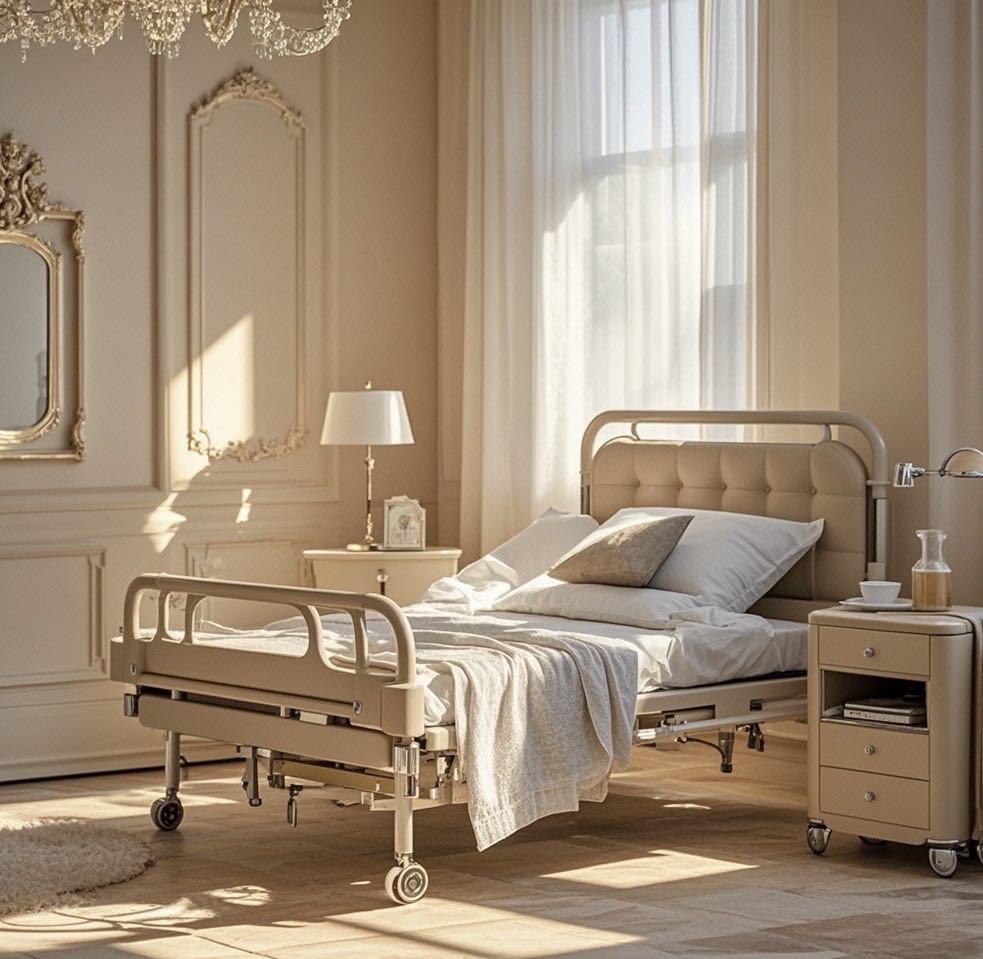Contents
Why Hospital Beds Are More Than Just Furniture
The Hidden Cost of Advanced Hospital Bed Technologies
Hospital Beds’ Extra Features Impact Costs
Hospital Bed Costs: Basic vs. High-Tech Models
Hospital Beds: Maintenance and Repairs You Can’t Ignore
Why Quality Hospital Beds Improve Patient Recovery
FAQ
What are the differences in cost between basic hospital bed models and high-end, technologically advanced models?
What ongoing maintenance and repair costs should be expected with the purchase of hospital beds?
How do hospital beds contribute to better patient outcomes and increased satisfaction in healthcare facilities?
What are the essential safety and regulatory considerations when it comes to maintaining hospital beds?
How do hospital beds contribute to more efficient and effective care delivery in healthcare facilities?
Introduction
Hospital beds are indeed a significant investment, and their cost can often be a point of concern for healthcare facilities and patients alike. The expense associated with hospital beds stems from several factors, including their design, functionality, and the materials used in their construction.
Why Hospital Beds Are More Than Just Furniture
To begin with, hospital beds are not merely standard beds; they are specialized pieces of medical equipment designed to cater to patients’ specific needs. These beds are equipped with adjustable sections to support various parts of the body, such as the head, legs, and back. The ability to adjust these sections is crucial for patient comfort, facilitating medical procedures, and aiding in the recovery process. This functionality requires a complex mechanism, often powered by electrical or hydraulic systems, which adds to the overall cost.
The Hidden Cost of Advanced Hospital Bed Technologies
Moreover, hospital beds are constructed using high-quality, durable materials to ensure they can withstand the rigors of a medical environment. The frames are typically made from robust metals like steel or aluminum, which offer the necessary strength and stability. The mattresses used are often designed with specialized materials that provide pressure relief to prevent bedsores, a common issue for patients who are bedridden for extended periods. These mattresses may incorporate advanced technologies such as memory foam or air-filled chambers, further driving up the cost.
Hospital Beds’ Extra Features Impact Costs
In addition to the basic bed structure and mattress, many hospital beds come with a range of accessories and features designed to enhance patient care. These can include built-in side rails for safety, IV pole attachments, and over-bed tables. Some advanced models even offer integrated weighing scales, temperature control systems, and sophisticated monitoring equipment. Each of these additional features contributes to the overall price of the bed.
Hospital Bed Costs: Basic vs. High-Tech Models
The cost of hospital beds also varies depending on the level of technology integrated into them. Basic models, which may only offer manual adjustments, are generally less expensive. In contrast, high-end models with electric adjustments, advanced monitoring capabilities, and specialized features such as patient rotation systems can be significantly more costly. The price can range from a few thousand dollars for basic models to tens of thousands for the most advanced options.
Hospital Beds: Maintenance and Repairs You Can’t Ignore
Furthermore, the purchase of hospital beds is only one aspect of the expense. Maintenance and repair costs must also be considered. Hospital beds require regular maintenance to ensure they remain in good working order and to comply with health and safety regulations. This maintenance includes routine inspections, servicing of mechanical and electrical components, and replacement of worn-out parts. These ongoing costs can add up over time, making hospital beds a considerable long-term investment.
Why Quality Hospital Beds Improve Patient Recovery
While the cost of hospital beds can be high, their importance in patient care cannot be overstated. They play a critical role in ensuring patient comfort, safety, and recovery. For healthcare facilities, investing in high-quality hospital beds can lead to better patient outcomes, increased satisfaction, and ultimately, more efficient and effective care delivery.
Summary
Hospital beds are indeed expensive, but this cost is justified by the advanced design, high-quality materials, and essential features they offer. Their role in patient care is vital, and the investment in these beds is a crucial aspect of providing top-notch medical services.
FAQ
What are the differences in cost between basic hospital bed models and high-end, technologically advanced models?
Basic hospital bed models, which may only offer manual adjustments, are generally less expensive. High-end models with electric adjustments, advanced monitoring capabilities, and specialized features can be significantly more costly, ranging from a few thousand dollars to tens of thousands.
What ongoing maintenance and repair costs should be expected with the purchase of hospital beds?
Ongoing maintenance and repair costs include routine inspections, servicing of mechanical and electrical components, and replacement of worn-out parts. These costs are essential to ensure the beds remain in good working order and comply with health and safety regulations.
How do hospital beds contribute to better patient outcomes and increased satisfaction in healthcare facilities?
High-quality hospital beds improve patient comfort, safety, and recovery, leading to better patient outcomes and increased satisfaction. Properly designed beds can reduce the risk of bedsores and other complications, enhancing overall care quality.
What are the essential safety and regulatory considerations when it comes to maintaining hospital beds?
Hospital beds must comply with health and safety regulations, which include regular maintenance, routine inspections, and servicing of mechanical and electrical components. Ensuring adherence to these standards is crucial for patient safety and effective care delivery.
How do hospital beds contribute to more efficient and effective care delivery in healthcare facilities?
Hospital beds facilitate efficient care delivery by improving patient comfort, enabling easier medical procedures, and reducing the risk of complications. Advanced features and accessories help healthcare providers monitor and care for patients more effectively.


